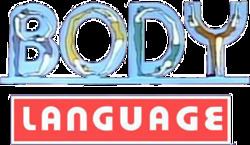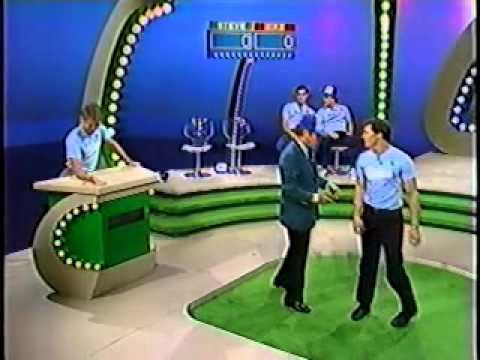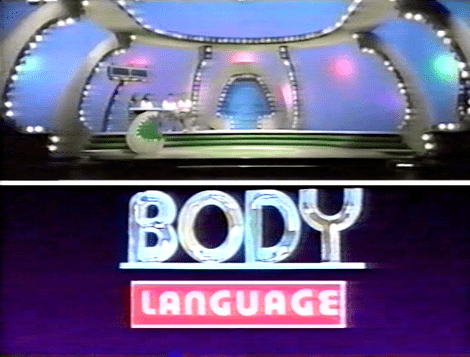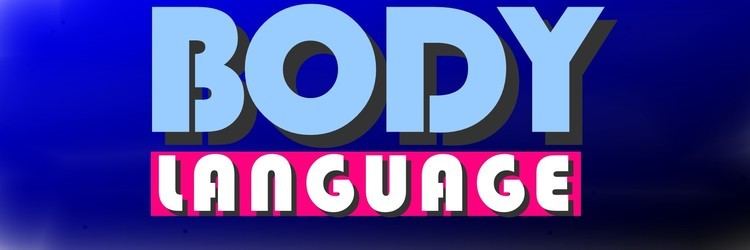6.6 /10 1 Votes
6/10 TV Country of origin United States First episode date 4 June 1984 Presented by Tom Kennedy | 7.3/10 IMDb Created by Robert Sherman No. of episodes 396 Final episode date 3 January 1986 Number of episodes 396 | |||||||||||||||||||||||||||||||||
 | ||||||||||||||||||||||||||||||||||
Nominations Daytime Emmy Award for Outstanding Live & Direct To Tape Sound Mixing Similar Game show, Child's Play, Blockbusters, Password, Password Plus and Super Pa | ||||||||||||||||||||||||||||||||||
Body language game show 3 15 85 with los angeles dodgers part 1
Body Language is an American game show produced by Mark Goodson Productions. The show aired on CBS from June 4, 1984 until January 3, 1986, and was hosted by Tom Kennedy. Johnny Olson announced until his death in October 1985; Gene Wood and Bob Hilton shared the announcing duties afterward, and had substituted on occasion before that.
Contents
- Body language game show 3 15 85 with los angeles dodgers part 1
- Body language game show jm jim j bullock vs lynn s
- Main game
- Bonus round
- ChampionsReturning players rule
- Tournaments
- Broadcast history
- In popular culture
- Episode status
- Pilots
- References

The show pitted two teams against each other, each consisting of a contestant and a celebrity guest. The gameplay centered on the party game charades, in the same vein as the earlier Goodson program Showoffs, but contestants also had to solve word puzzles to win money, making Body Language a cross between Showoffs and Password Plus/Super Password.

Body language game show jm jim j bullock vs lynn s
Main game

For each team's turn, both celebrity and contestant would walk to the stage floor to play. One would stand behind a podium at stage left, while the other would be stationed at center stage in front of him/her. A screen was built into the podium and the team member at center stage would look into it in order to receive a series of five words or phrases to convey.

In each turn, the teammate serving as "actor" had 60 seconds to get their partner to say as many of the five words or phrases as possible. The clue-giver was not allowed to talk or use props, including their own clothing. They instead had to "pantomime" (as Kennedy referred to it) the words. The pantomiming player could pass on any words they wished and come back if time remained. If an illegal clue was given (e.g., saying a word, using a prop), the acting portion immediately ended and the actor/actress was disqualified for that round. The guesser then attempted to solve the puzzle portion of the round. If, in post-acting conversation, the actor revealed or discussed a word that had not been guessed, the opposing team received the first chance at the puzzle.

The puzzle was a sentence or question with seven numbered blanks. Five of the blanks corresponded to the words or phrases that were acted out, and any that had been guessed correctly were revealed. The contestant then had one guess at what person, place or thing puzzle described. If the player was correct, they won money for that puzzle. If not, the player's opponent was called over to choose a blank to reveal and then make a guess. The two players alternated revealing blanks and making guesses until one got the correct answer and won the puzzle; if neither player had solved the puzzle after all seven blanks were filled in, the teams' "actors" would each receive one guess. In the sixth week of the show's run, parentheses were added to the two "un-acted" words.
The game had two rounds with each team acting once per round. In the first round, celebrities acted and contestants guessed, and puzzles were worth $100. In the second round, the celebrities guessed while the contestants acted, and puzzles were worth $250. If a puzzle went completely unsolved, the value of that puzzle carried over to the next puzzle (for example, if the second $100 puzzle was not solved, the next one would then be worth $350 instead of the normal $250.)
Toward the end of the series, beginning in fall 1985, a bonus was added to the second round of play. If one of the contestants managed to get his/her celebrity partner to correctly identify all five words or phrases he/she acted out within the time limit, the contestant won a $500 bonus. This was only available to the first contestant to do it and did not have any effect on the score of the game.
The first team that reached $500 won the game. Because the puzzles from the first round were only worth $100, a team had to win both their own $250 second round puzzle and their opponent's to reach a score of at least $500. It was common for neither team to reach that mark after two rounds. If this occurred, a playoff puzzle was played with no acting. Contestants again took turns revealing a chosen blank and guessing the puzzle until one guessed correctly, won the extra $250 and the game. The champion player was given the choice to start or have their opponent start.
Bonus round
The team had 60 seconds to guess as many of ten words or phrases as possible. Like the previous rounds, only the clue-giver could pass on a word, but could come back to it if time permitted. Originally the celebrity player acted out the words; beginning June 10, 1985, the civilian player chose which team member would act and which would guess. Each correct word was worth $100. At the end of the first half, unlike the previous rounds, a contestant was informed of what words they had missed. Illegal clues took that word out of play.
After the first half of the bonus game, a 20-second round was played with three new words or phrases. If the team guessed all three before time expired, the money won in the first half of the bonus round was multiplied by 10, for a maximum possible bonus of $10,000; otherwise, the player kept the money won in the first half. Any illegal clue in the second half ended the game immediately.
Champions/Returning players rule
Originally, winning contestants returned for up to five games, or until winnings reached $25,000, before being retired, and losing contestants did not return (the maximum amount a contestant could retire with was $50,000). Beginning on September 24, 1984, a new system was implemented under which players can stay on the show until they have two losses. It was initially explained that each pair of contestants would play best-of-three matches; however, in practice, two losses in different matches still resulted in a player leaving the game. Under that new system, champions could stay on the show for up to six wins. The winnings limit was increased to $50,000 two months later; therefore, the maximum amount a contestant could retire with was increased to $64,200.
Tournaments
In the summer of 1985, Body Language had a month-long "Teen Week." The teens played the standard game; any winnings up to $2,500 were awarded in cash, while anything over that amount went into a savings bond that matured on the player's 18th birthday. If the player didn't win $2,500 through the game, the total was increased to that amount. During Teen Week, getting all five words in the second round netted a special bonus prize that was different every time it was won, such as a Commodore 64 computer.
Broadcast history
Body Language, in effect a revival of the 1975 ABC program Showoffs, replaced the second version of Tattletales at 4:00 PM (3:00 Central). Although its sole network competition on ABC, The Edge of Night was nearing the end of a long run, the game struggled nonetheless because many local affiliates had for years preempted the network feed at that time in favor of syndicated programming, which likely brought in larger advertising revenues.
Although some stations tape-delayed the show for broadcast the next morning, Body Language still managed only a fraction of the audience that daytime games such as The Price Is Right and The $25,000 Pyramid did. As such, CBS canceled the game in late 1985 in favor of a revival of Goodson's Card Sharks, which necessitated a move of Press Your Luck to Body Language's time slot beginning January 6, 1986. CBS would give the 4 PM slot back to the affiliates in September 1986 after Press Your Luck finished its run (that show was canceled a month earlier).
All episodes of Body Language were taped in studio 33 at CBS Television City in Hollywood.
The idea for the TV show "Body Language" originated with the Milton Bradley board game of the same name which was created by Dr. Cody Sweet, the first platform speaker on nonverbal communication (body language), in 1974.
Host Tom Kennedy would also concurrently host The Nighttime Price Is Right near the end of Body Language's broadcast run. Similarly, Olson also announced both editions of Price until his midseason death in what was the daytime show's 14th season. Kennedy, whose hair had visibly grayed by the time Body Language began production, dyed his hair brown to host Price (as daytime host Bob Barker was also still doing at the time; Barker would revert to his natural white hair in 1987) and can be seen with his dyed brown hair in Body Language's later episodes.
In popular culture
Two clips of an episode featuring Betty White as a celebrity partner were shown on a third-season episode of Hot in Cleveland in 2012 titled "How Did You Guys Meet, Anyway?" The footage was digitally altered to include a nametag on White that read "Elka", to make it appear that White's character Elka Ostrovsky was appearing as a contestant.
Episode status
All episodes are intact. GSN has aired the show at various times since 1994. Currently, Body Language can also be seen in select markets on Fremantle's Buzzr station, beginning on June 1, 2015.
Pilots
Three pilots for the series were made on October 9, 1983. The only change in the front game was the scoring, with puzzles worth $100–$200–$300–$400, and $500 was needed to win the main game. Future actress Anne-Marie Johnson was a contestant.
The endgame was called "7 Chances." Two puzzles were shown with the requisite 7 blanks. The celebrity chose the blank to be revealed, and the contestant tried to guess the puzzle. If the contestant got both puzzles, they won $7,000 + $1,000 per leftover chance. If they got one puzzle, that contestant won $500.
Other differences include the set, which looked much greener, and the use of the theme song. The theme song was Working Girl March by Dave Grusin, from the 1982 film Tootsie. In addition, the theme was also later used for other unsold Goodson-produced game show pilots of Star Words in 1983 and On a Roll in 1986. Also, the win cue from the endgame "7 Chances" was also used from Mindreaders and later on, the 1980 pilot of Puzzlers and the 1983 pilot of Star Words.
One of the three pilots later aired on Buzzr as part of their "Lost and Found" week on September 11, 2015.
